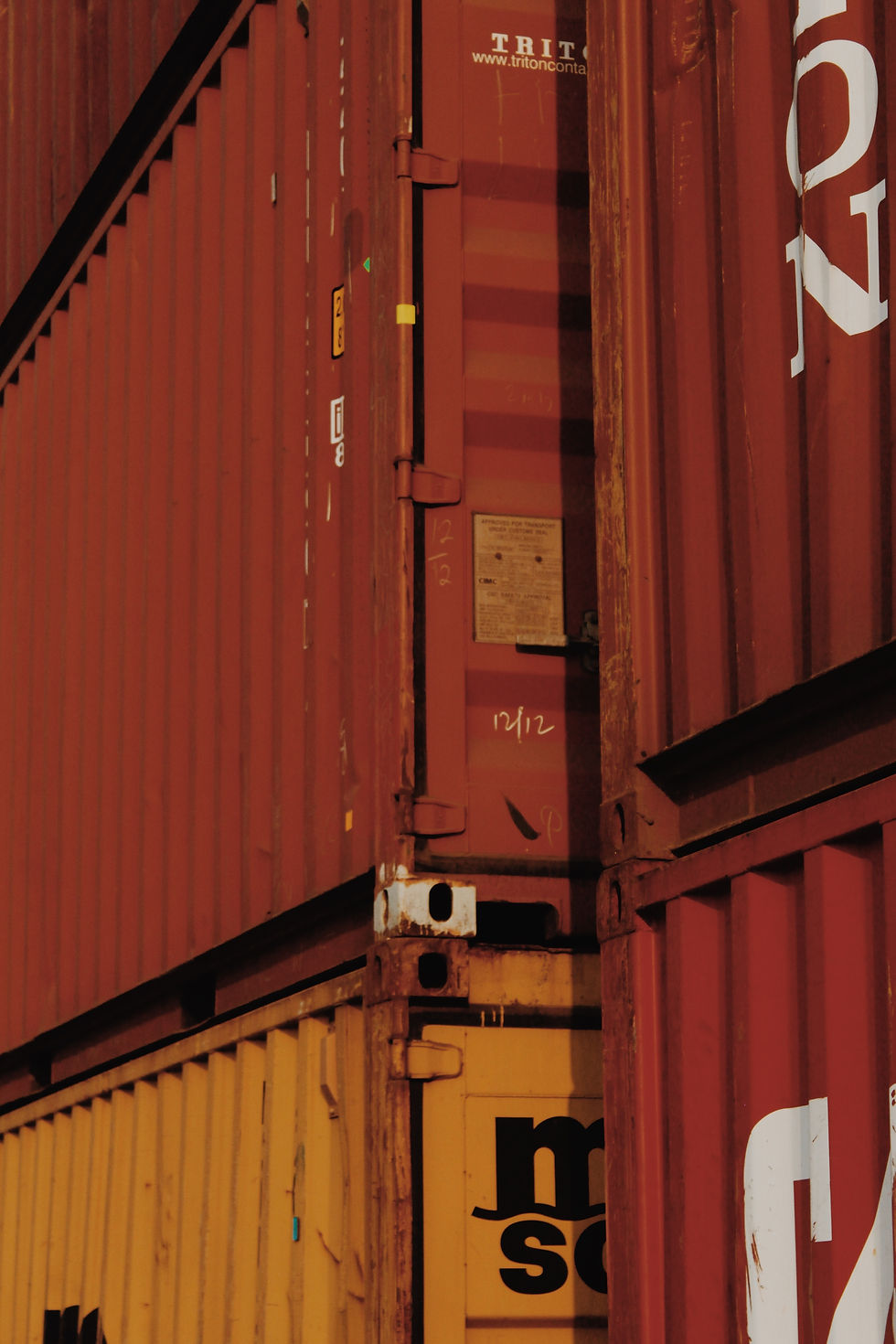Your Key to Sustainable Success: Managing Supply Chain Emissions
- Lexi Rosemoore
- Feb 2, 2021
- 4 min read
Updated: May 4, 2021

Earth is getting warmer, and the devastating climate changes are being felt, weather events, natural disasters, mass extinction… but the question is:
Are you part of the problem?
Chances are, if you’re a forward-thinker, you’re probably already taking note of your organisation’s emissions profile. Whether you’re onto it already and monitoring your carbon footprint, or you’re just getting started, good on you.
However, there’s a lot to emissions reporting. Beyond the direct impact of your organisations activities, like powering offices, industrial processes and company vehicles, looking at your supply chain emissions opens a whole other can of worms.
This may all seem overwhelming but don’t stress, here we’ll simply explain each scope of emissions and outline how you can get started on reporting on each of them.
Scope One and Two Emissions
Scope one and two cover the operations and energy usage for an organisation’s owned operations. This is what you likely consider when you think of your carbon footprint and includes industrial processes, heating, travel and other direct activities.

By monitoring your scope one and two emissions, you’re able to make informed decisions on how to
reduce them.
It’s a great place to start, as the responsibility for change falls upon your organisation and your organisation only.
It might seem that if every organisation reduces their scope one and two emissions, supply chain emissions would naturally follow. However, as the urgency of the climate crisis looms, it’s apparent that it’s not the case.
Scope Three Emissions - Supply Chain Emissions
Scope three emissions are where things get complicated. These emissions derive from the supply chain, including any purchase of products and services that your organisation might use.

Reducing these emissions requires action from other organisations in the supply chain, which makes it more difficult to reduce than scope one or two. It requires a good understanding of your supply chain as well as needing action from those within it.
But can you lead your suppliers toward creating more emissions savings?
If your organisation is small, switching to a different, lower emissions or more transparent supplier might be the easiest option.
If your organisation has a good relationship with your supplier, or a certain amount of influence, you may be able to talk to them about their carbon footprint.
Are they monitoring their emissions already?
If not, encourage them to start. From there, it can be easier for you and your suppliers to pinpoint areas to start reducing emissions.
Often, if an organisation is not already reporting on their emissions, there is already plenty of low hanging fruit, or quick win opportunities to start reducing emissions.
The Benefits of Working on Your Scope Three Emissions

Manage Your Emissions
This may seem like a no-brainer, but it has to be said: Reducing your scope three emissions will help you manage your emissions.
Rather than combing through every tiny aspect of your scope one and two emissions, searching for any little reduction opportunity, understanding your supply chain emissions can help point out glaring inefficiencies.
You can then prioritise reductions in those areas efficiently.
Work with Like-Minded People
By demanding transparency from your suppliers, you can ensure that your organisation is working with like-minded suppliers who align with your organisation’s goals and values.
In working with your suppliers to reduce emissions, your organisation can build strong relationships and connections with people you know you can trust.
Manage Climate Risks
The risks of climate change are real, for the planet and for your organisation.
You might have heard of the Task Force for Climate-Related Financial Disclosures (we wrote a whole article about it here!).
It’s an organisation who has developed a set of climate-related financial risk disclosures that have been adopted by the New Zealand Government. Recent legislation requires around 200 organisations to make annual disclosures on their exposure to climate risk based on the TCFD’s recommendations.
It just shows how significant climate-related risks are and how seriously they need to be taken.
Good thing is, monitoring and managing your scope three emissions is a great way to manage those climate risks. Understanding your emissions in the supply chain means you’re informed about any risks that might present themselves to you or your suppliers.
Climate Leadership
Being proactive when it comes to your supply chain emissions can really set you apart from the crowd.
Differentiating yourself as environmentally conscious is great to assert your organisation as a climate leader, something that is desirable to consumers and can be a great source of competitive advantage.

Already, the Climate Leaders Coalition has 103 signatories pledging to be “proactively supporting our suppliers to reduce their emissions”. This fits with their science-based targets and goal to keep warming below 2 degrees, limiting the increase to 1.5 degrees.
But, Where to Start?
If you’re not already reporting on your scope one and two emissions, that’s the first step.
Reporting on these allows for effective, data-backed changes in your organisation to reach your emissions targets. It also sets your organisation apart as environmentally conscious and ahead of the curve.
Using a carbon reporting software can help you get a handle on Greenhouse Gas Emissions and save you a lot of time. Our e-Bench® energy and utility management cloud platform gives you the information you need in easy-to-interpret reports.
Once you’ve got your reporting down, it’s time to put the pressure on your suppliers. Know the impact of the products and services you are sourcing and assert your organisation as a climate leader.
Our Carbon EES team are on hand to provide local insights and support in order to get you on track and making emissions reporting simple, no matter the scope.
To learn more about how we can help you monitor your organisation’s impact, book a time to chat with us at Carbon EES.
















Comments